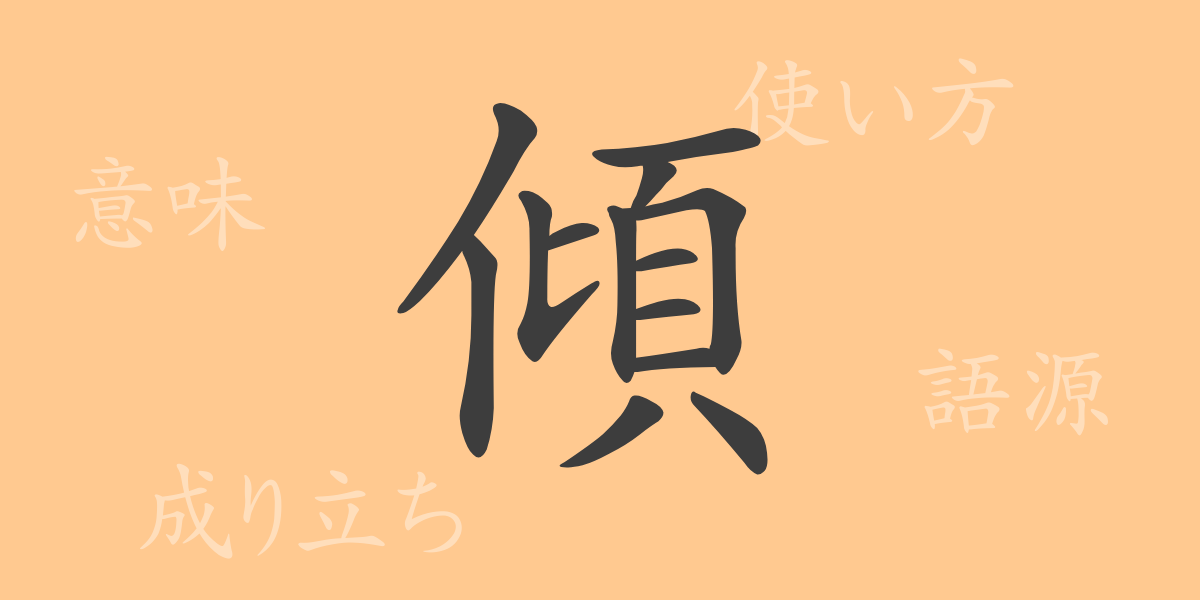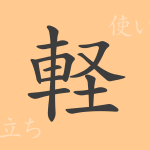Japanese writing culture is deeply rooted, with kanji being central to it. One such frequently used kanji in daily life is “傾(けい, kei),” which holds a prominent place in the 常用漢字(じょうようかんじ, jouyou kanji) list. This article delves into the allure and usage of the kanji “傾(けい, kei).” By exploring its origin and various compounds, we aim to deepen your understanding of Japanese through the world of “傾(けい, kei).”
Origin of 傾(けい, kei) (Etymology)
The kanji “傾(けい, kei)” originated in ancient China. It is a pictographic character depicting a person leaning on something. Originally, it represented a person tilting to one side, and from this meaning, it evolved to signify objects tilting, inclining, or emotions leaning towards something. Over time, the character’s form and meaning were refined, culminating in the modern Japanese usage of “傾(けい, kei).”
Meanings and Uses of 傾(けい, kei)
“傾(けい, kei)” means “to incline” or “to tilt.” It refers to both physical inclination and metaphorical leanings, such as tendencies or affections. For example, “傾斜(けいしゃ, keisha)” describes a slope or tilt, “傾聴(けいちょう, keichou)” means listening attentively, and “心が傾(かたむ)く(kokoro ga katamuku)” expresses one’s heart leaning towards something. These usages reflect the subtle emotions and situational changes of the Japanese people, allowing for rich expression.
Readings, Stroke Count, and Radical of 傾(けい, kei)
Understanding the readings and structural components of “傾(けい, kei)” enhances comprehension.
- Readings: The on’yomi (Chinese reading) is “ケイ(けい, kei),” and the kun’yomi (Japanese reading) includes “かたむ(む)(katamuku)” and “かたむ(ける)(katamukeru).”
- Stroke count: “傾(けい, kei)” has 12 strokes.
- Radical: The radical is “人(ひと・にんべん, hito/ninben),” meaning “person.”
Idioms, Expressions, and Proverbs Using 傾(けい, kei)
Numerous idioms and expressions contain “傾(けい, kei),” showcasing its depth in the Japanese language. Here are a few examples:
- 傾向と対策(けいこうとたいさく, keikou to taisaku): Analyzing trends and devising countermeasures.
- 傾聴(けいちょう, keichou): Listening attentively and carefully.
- 情に傾(かたむ)く(じょうにかたむく, jou ni katamuku): Being swayed by emotions or leaning towards certain feelings.
- 左に傾(かたむ)く(ひだりにかたむく, hidari ni katamuku): Leaning to the left, often used politically to indicate leftist tendencies.
Conclusion on 傾(けい, kei)
The kanji “傾(けい, kei)” is well-suited for expressing movements and psychological states evoked by its form. In Japanese, it is used to depict not only physical inclines but also shifts in heart and will. Through idioms and proverbs, the nuances of “傾(けい, kei)” can be applied to various situations. We hope this article has deepened your understanding of “傾(けい, kei),” aiding you in achieving richer Japanese expression.

























